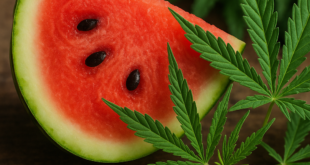Inditex – Spain’s multinational fashion group and owner of the Zara, Stradivarius, Pull&Bear and Bershka brand, among others – once again closes a historic financial year with a 9% increase in net profit, reaching almost 5.9 billion euros. The record profit is attributed by Inditex to better cost-control and sales growth of 7.5%, but this is still a modest increase when compared with recent years.
Amancio Ortega founded the company which earned 38.6 Billion Euros. Comparing current figures to those of previous years, the slower growth rate is more apparent. It is the first year since the pandemic when neither sales nor profits have increased by double digits.
Even so, gross margins (the group’s profit on each sale), which represent 57.8%, were 22.3 billion Euros, 7.6% above 2023. The textile giant confirmed that customers are already expressing positive comments about its Spring/Summer collection. Sales between 1 February and 10 March 2025 are up 4% over the same period of 2024.

“The excellent sales and profit figures show Inditex Group’s profitable growth, the efficiency in all operations and the constant innovation with which our teams drive a business model that continues to show its ambition and strength 50 years after the opening of our first shop,” said Inditex CEO Óscar García Maceiras.
Good business results allow the company to fulfil its own great desire: the board will propose an increase in dividends of 9% by 2025, up to 1.68 euro per share.
Inditex maintains both its investment strategy and growth plan. Despite a reduction in brick-and mortar shops, it is estimated that the annual gross area for the period 2025-2026 will be around 5%. Inditex stated that “the logistics expansion program remains on schedule. This extraordinary 2-year investment programme focused primarily on business expansion earmarks 900 millions euros for each of the financial years 2024-2025 to increase logistic capacity.”
More sales, less shops
The Galician textile giant has consistently been able to sell more products with less physical shops, despite the slowdown of its growth rate. This is also heavily influenced the currency effect. The company had 5,563 outlets at the end of the year, 129 less than the year before. Retail space increased by 2%.
Online sales have continued to increase, now reaching nearly 10,2 billion euro, or more than 26%, up from 25,2% in 2023. In physical shops the growth rate was lower at 5.9%.
Zara Home and Zara, the company’s flagship, account for over 70% of its turnover. Stradivarius – another of its best known brands – is outpacing Bershka’s and Oysho’s 11.8% growth rate with 14%.
Performance by Region
Spain gained again in importance, with a 15% share of the total turnover. The rest of Europe was also growing strongly. On the other side, the US decreased from 19,6% down to 18,6% and Asia from 16,9% down to 15,7%.
Inditex will open its first shop in Iraq in 2025. Bershka’s first shop will be opened in Sweden. Stradivarius and Oysho both will debut in Austria.
Inditex Group’s strategy in the US remains unclear, as it has focused much of its efforts on international expansion. Inditex’s future across the Atlantic is uncertain because of the unpredictability of Donald Trump’s geopolitical policies and tariffs.
 Costa News Spain Breaking News | English News in Spain.
Costa News Spain Breaking News | English News in Spain.





